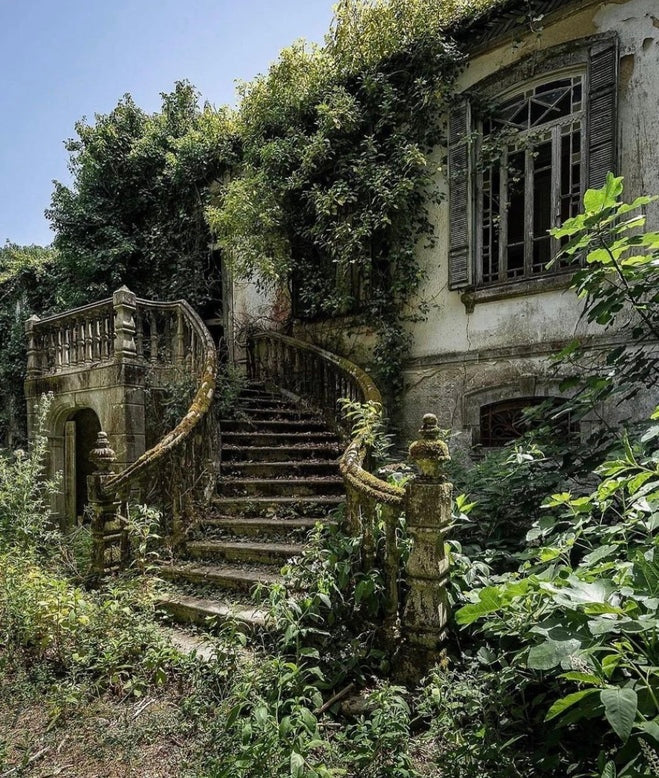Discover how to find abandoned places near you in Canada: tips and resources for exploring hidden, mysterious locations perfect for urbex enthusiasts.
Finding abandoned places in Canada for urban exploration can be a fascinating adventure. Canada has an abundance of forgotten buildings, old factories, ghost towns, and historical sites just waiting to be rediscovered. Here’s a guide on how to locate abandoned places near you in Canada and explore them safely and respectfully.
1. Online Urbex Communities and Canadian Forums
One of the best resources for finding abandoned sites is online communities and forums where urban explorers share information, photos, and tips on local spots. These communities can be a treasure trove of information about entry points, safety considerations, and the history of each location.
- Ontario Abandoned Places (OAP): Ontario Abandoned Places is one of Canada’s largest urbex communities, with a vast database of abandoned places throughout Ontario and beyond. Members contribute reports and photos, making it a valuable resource for finding abandoned spots.
- Reddit: Subreddits like r/urbanexploration and r/AbandonedCanada are popular places to discuss Canadian urbex. Members often share photos, locations, and exploration stories specific to Canadian provinces.
- Facebook Groups: Search for groups like "Urban Exploration Canada," "Abandoned Ontario," or other regional urbex groups on Facebook. These groups are often filled with Canadian explorers sharing location ideas, planning meetups, and giving advice on local spots.
2. Use Satellite Imagery and Mapping Tools
Digital mapping tools, particularly those with satellite and aerial imagery, are invaluable for scouting potential abandoned locations. Using tools like Google Maps or Google Earth, you can survey areas around you and spot signs of neglect, overgrowth, or disrepair that might indicate an abandoned place.
- Google Maps and Google Earth: Use satellite view to look for abandoned-looking structures, such as empty lots, overgrown properties, or buildings with visible disrepair. Street View can sometimes provide a closer look if it’s available in the area.
- Historic Aerials: Websites like Historic Aerials or Google Earth’s historical imagery feature let you compare past and present images of a location. This can reveal buildings that may have been abandoned for a long time.
- OpenStreetMap: Some OpenStreetMap users mark abandoned or derelict structures on the map, making it a good tool for finding lesser-known spots, especially in rural or remote areas.
3. Search Local Historical Databases and Heritage Sites
Researching the local history of your area can lead you to historically significant places that have fallen into disrepair. Many abandoned sites in Canada hold historical importance, and heritage resources can be an excellent starting point.
- Historic Places of Canada: This database features registered heritage sites across Canada. While some are maintained, others are abandoned or partially accessible, making them interesting options for exploration.
- Canada’s Ghost Towns: Canada has many ghost towns, especially in provinces like British Columbia, Alberta, and Nova Scotia. Websites like Ghosttowns.com or specific regional sites list ghost towns and abandoned settlements that are publicly accessible.
- Provincial Historic Sites: Many provincial historic sites include old factories, houses, and former industrial areas that have been preserved in some form. Check out historical or heritage sites near you, which may be partly abandoned or open for public visits.
4. Check News Reports and Local Government Records
Local news archives or government property records often provide information on abandoned buildings, especially if they’re considered a safety hazard or are pending redevelopment. These reports can be a useful resource for finding recent closures and newly abandoned sites.
- Local News Outlets: Search local newspapers or news websites for keywords like “abandoned,” “derelict,” “closed,” or “vacant” along with your city’s name. Abandoned places are often covered in the news when they become public safety concerns or potential development projects.
- Municipal Property Records: Some cities and municipalities publish lists of vacant, condemned, or foreclosed properties. These public records can sometimes include addresses or general areas where vacant properties are located.
5. Explore Photography and Urbex Apps
There are several apps and websites where photographers and urban explorers share locations of abandoned or visually unique sites. These can be helpful for finding lesser-known spots, especially in Canada’s more remote or rural regions.
- Abandoned Places App: This app (available for both iOS and Android) features a community-driven database of abandoned locations, including many in Canada. You can search by location and view photos and information submitted by other users.
- Instagram and Location-Based Apps: Search for hashtags like #abandonedcanada, #urbexcanada, or #abandonedontario on Instagram to find local places. Many photographers tag their location, allowing you to track down places of interest near you.
6. Seek Out Public Ruins and Accessible Heritage Sites
If you prefer exploring legally accessible places, Canada has a number of public ruins and historical sites open to the public. Many of these places are maintained as part of heritage preservation but retain the ambiance and history of an abandoned site.
- National and Provincial Parks: Parks Canada and provincial park systems have historical sites, such as old mills, abandoned villages, and ruins. These places are open to the public and provide a safe and legal way to explore.
- Historic Railway and Mining Sites: Canada has a rich mining and railway history, and many old mines, rail stations, and ghost towns are open to visitors. For example, the Atlas Coal Mine in Alberta is a designated historic site with tours and preserved structures.
- Heritage Trails and Walking Tours: Many towns and cities in Canada have heritage trails that pass through old industrial areas, mills, or abandoned homes, allowing you to explore these sites legally.
7. Network with Other Local Urban Explorers
One of the best ways to find new locations is by networking with other local urban explorers. You can learn from those who are more experienced and may have insider information on spots that aren’t widely known.
- Urbex Meetups and Groups: Many urbex groups organize in-person events or meetups for exploring together. By connecting with other explorers, you can gain access to new locations and learn valuable tips for staying safe.
- Photography Clubs and Historical Societies: Many photographers and history enthusiasts are aware of local abandoned sites. Joining a photography or historical society can introduce you to individuals with similar interests who may be willing to share location tips.
Discover the Best Abandoned Places with Our Maps!
Are you looking for the best abandoned places near you? Look no further! Whether you're a seasoned urban explorer or a curious amateur, our maps are full of abandoned places to explore. Discover our maps!












